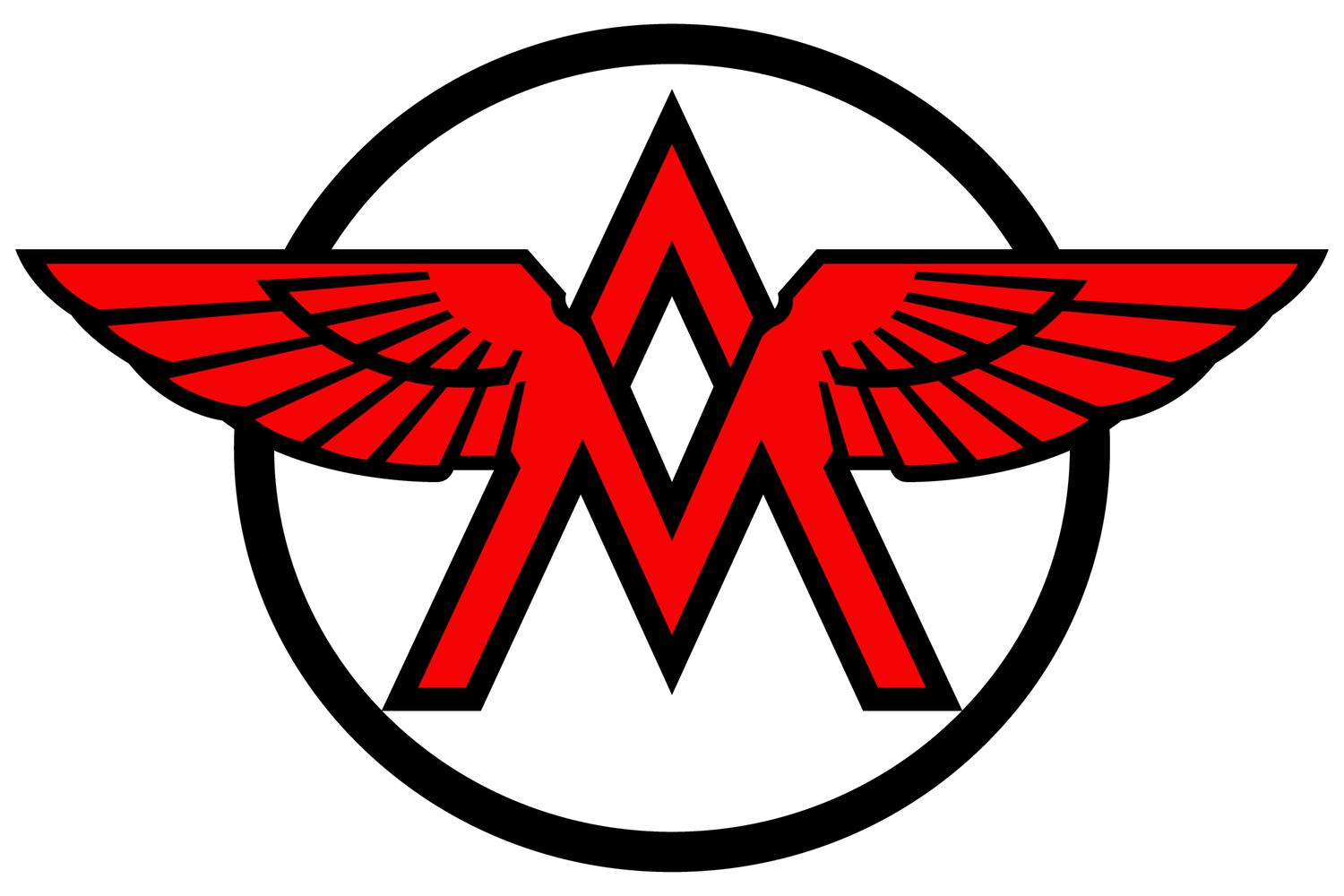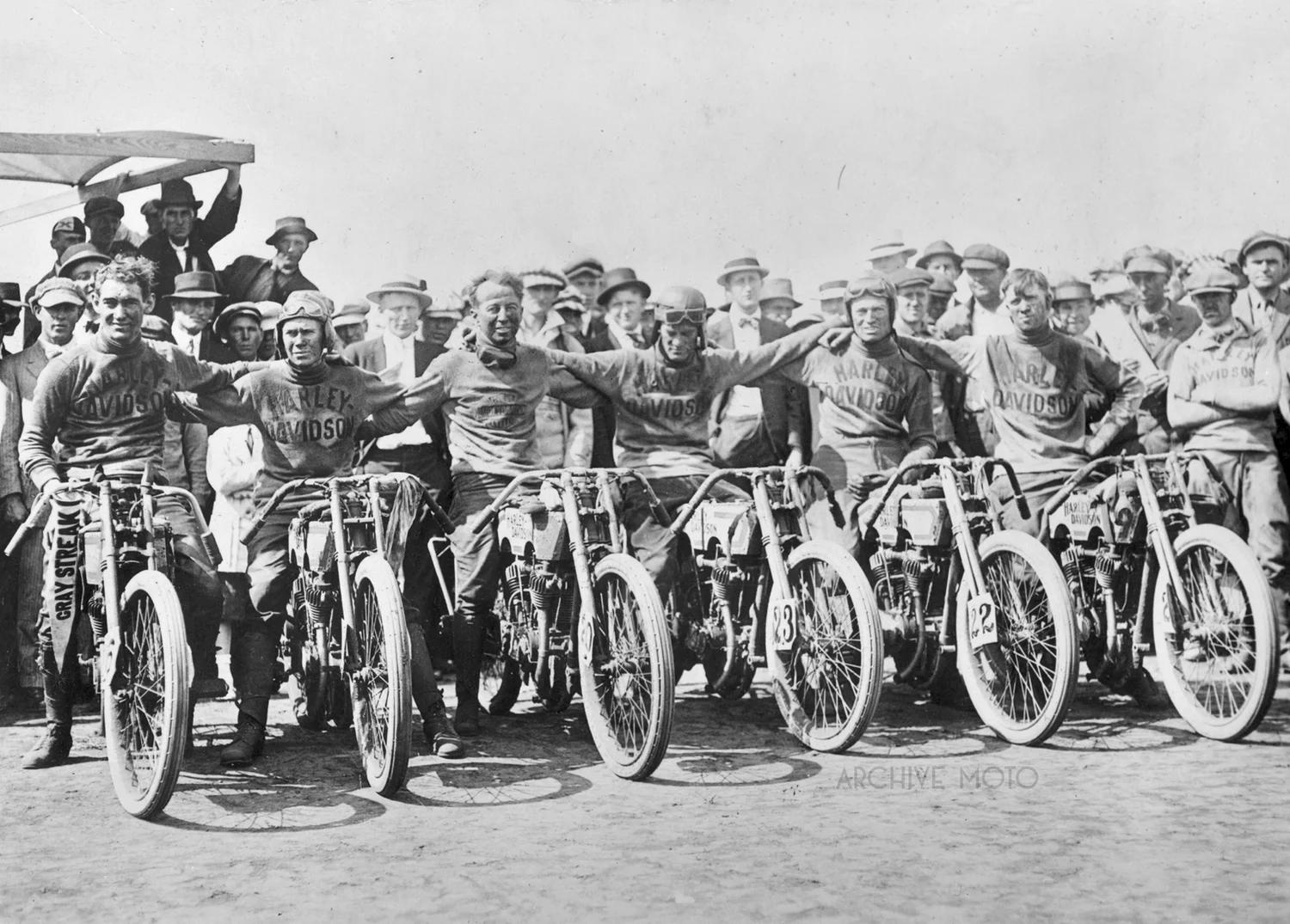Harry James Glenn circa 1911. A single photo of Harry kicked off my amazing journey researching the origins of American motorcycle culture. Harry was a racer and a salesman, a promoter and an enthusiast, a mentor and a shriner, a father, a husband, and most of all a kind hearted ambassador of our motorcycle culture from its very beginning. Harry's innumerable accomplishments were collected and preserved within his scrapbooks, which his grandson has so graciously allowed me to share with our community through both my book Georgia Motorcycle History, as well as my ongoing project Archive Moto. Harry has continued to inspire enthusiasts for over a century and as a result I am completing his nomination packets today for induction to the Georgia Racing Hall of Fame and the AMA Motorcycle Hall of Fame. Harry spent his life in the saddle of an Indian motorcycle, spreading his passion for the machines as well as the sport of racing across the country, and with any luck his legacy will be preserved alongside the other legendary pioneers of our culture.
The rider seated onboard twin-cylinder Indian racer is Peter H. Cox of New Haven, Connecticut. Standing next to him in all back, racing number pinned to the back of his sweater is Peter’s brother, James F. Cox Jr., and next to him in the white sweater I believe is another New Haven man by the name of George Wildman. The gentlemen racers were all competing, onboard Indians no less, in the Shingle Hill Climb on May 26, 1909. The race, a timed one mile ascent for both automobiles and motorcycles was hosted by the Yale Automobile Club and took place on Shingle Hill in West Haven, Connecticut. The Cox brothers and their club-mate Wildman were also joined by three other competitors including veteran Indian racer William Wray, George Gregory and his FN Four, and G.G. Byrnes onboard an MM. It is quite hard to tell but that is most likely G.G. Byrnes biting his nails in the far back left of the photo, and either Wray or Gregory in the suit just behind Peter Cox.
As usual for 1909 the Indian boys took all of the high honors in front of a crowd of nearly 15,000. Peter blasted up the hill 14 seconds faster than any of the other competitors in the small displacement race, making the climb in 1 minute 4 and 2/5 seconds. He also took the top spot in the free for all event on board the twin cylinder machine seen in this photo, covering the mile in 55 seconds flat. His brother “Jimmy” was never far behind, coming in third place in all three events, a fact I’m sure Peter reminded him of over the following weeks. The sensation of the day however was the veteran William Wray who shot up the hill onboard a similar twin cylinder factory racer in 52 seconds flat winning the twin cylinder race. The long time friend of Indian’s chief engineer Oscar Hedstrom, Wray’s time made all of the headlines as he nearly made the fastest recorded time for any machine that day, two wheels or four. Onboard his 6 HP Indian twin, Wray averaged a speed of 62 mph and was bested by only 4/5th’s of a second by David Bruce Brown in his monstrous 120 HP special construction Benz racer, affectionately referred to as the Automastadon.
Here is an extremely rare machine, from a company that has largely been forgotten, but one who’s fingerprints can be found firmly imprinted onto nearly every facet of early American motorcycle culture. The Aurora Automatic Machine and Tool Company began in 1886 just west of Chicago as a manufacturer of bicycle components. However, within the companies abbreviated lifespan it manufactured engines and parts for practically ever major brand in the country. Indian, Reading Standard, Harley Davidson, Flying Merkel, Sears, Henderson, and even the mighty Cyclone all utilized components made by the Aurora factory. It was one of the first companies competing in the professional motorcycle racing circuit and can claim such legendary racing stars as Paul Derkum, Arthur Mitchell, Ray Seymour, Howard Schaeffer, and Dave Kinnie among its racers. In the first 3 of its 12 year run producing motorcycles of its own, Thor discovered and employed the talents of two major engineering prodigies. Albert Crocker, founder of the iconic and highly desired Crocker motorcycle worked and raced for Thor between 1907 and 1909 when he left for a long tenure at Indian. The Canadian born William Ottaway was brought on board in 1909 and put the company in the top ranks of competition during the height of the board track motordrome era. Ottaway was pulled away to Harley-Davidson in 1913 to begin development of their new racing program, a program which he would turn into legend by creating machines like the 11K and the banjo two cam, and recruiting talent like Ray Weishaar, Jim Davis, Otto Walker, and Leslie “Red” Parkhurst. Unable to compete with the dominant big three of mid-teen’s motorcycle manufacturing Harley-Davidson, Indian, and Excelsior, Thor began to wind down their production during the war years and by 1920, the company pulled the plug on its motorcycle department. Seen here is one of the factory’s brightest racing stars, Shorty Matthews with his Ottaway tuned racer just before the grand opening of the Columbus Motordrome in June of 1912.
William S. Harley and Walter Davidson pause at a checkpoint along the 505-mile route of the 1910 Federation of American Motorcyclist (FAM) Endurance Competition. The two men from the Harley-Davidson Motor Company were among the record 126 entrants to compete in the 9th annual endurance event early that August. Obviously the duo piloted the latest 35ci, 4HP machines that the Motor Co. had to offer and were accompanied by two other factory men, Frank Ollerman and Alexander Klein on two more of the same model. The major brands of Indian, Excelsior, Merkel, Reading Standard and Thor filled up the field of entrants, but smaller manufacturers like Bradley, Emblem, Yale, Reliance, Mack, MM, New Era, Haverford, Marvel, and Pierce rounded out the list. None of the “Harley-Davidson team” were professional racers, though one could argue that Walter Davidson was the company’s first racer as he frequently competed in a variety of events once joining the company in 1907. The remaining entrants covered the spectrum of early American motorcyclists, from professional racers and manufacturer teams to your everyday motorcycle enthusiast, all competed to test their machines and themselves alike.
After a hard rain made thick clay out of the course roads on the first day nearly 90 of the entrants fell too far behind in the points to place though several continued forward. The mud-bathed boys from Milwaukee pushed through the difficult conditions and each man finished the event with near perfect scores. William S. Harley, the high man on the HD totem pole finished in the top 10 with a score of 986 points out of 1000. An account of the event speculates that if William Harley had not stopped to help his teammates through the nastiness of that first leg he would have easily claimed a perfect score. With the help from Bill Harley, Walter Davidson came in 13th with 916 points, Frank Ollerman finished 20th with 846 points, and Alex Klein rounded out the team in 23rd place with 712 points. Only 24 men, including all 4 members of the Harley-Davidson team finished the 1910 FAM Endurance Competition out of the 126 that entered. The next week a full page advertisement announcing the accomplishment and superiority of Harley-Davidson motorcycles was taken out in the newspapers and trade magazines proclaiming that “it’s the road, not the race track that really tests a machine.”






